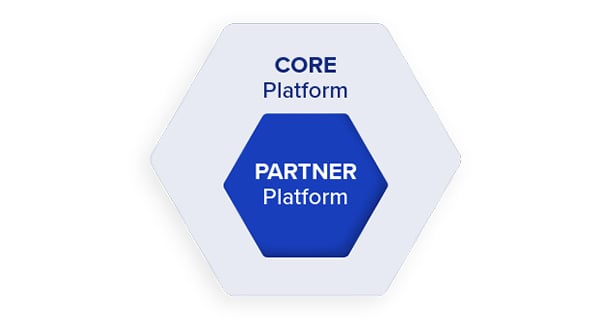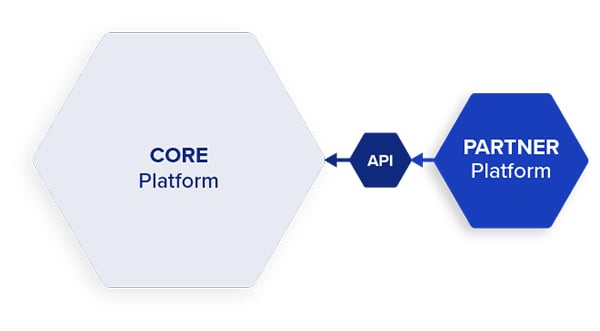Embedded vs Integration vs White Label in SaaS: What’s the Difference?

Understanding the differences between embedded, integration, and white label SaaS models is essential for software leaders evaluating how to expand their platforms. This article defines each approach, compares their benefits and limitations, and explains why white label solutions provide the strongest path for companies seeking brand ownership, seamless user experiences, and scalable growth.
What’s Inside
- Why it matters to distinguish between embedded, integration, and white label SaaS models
- A clear definition of each model with key characteristics, pros, and cons
- A side-by-side comparison table showing branding, user experience, customization, and revenue potential
- Guidance on how to choose the right model for your business goals
- How true white label partnerships create long-term growth opportunities
At HR Tech 2025, one of the biggest takeaways was how often people use the term "white label" to describe their solutions. Many companies spoke about being white label, but what they were really describing was embedding or integrating their solution into another platform. These approaches all have value, but they are not the same. Understanding the differences between embedded, integration, and true white label models helps SaaS leaders choose the right strategy to expand their offerings and deliver the experience their clients expect.
Why the Distinction Matters
The way a solution is delivered influences brand ownership, user experience, customer trust, and long-term revenue opportunities. A payroll provider that simply integrates with a recruiting tool is offering something very different than a SaaS vendor whose recruiting solution is fully white labeled into their platform. Clarity matters, because the right approach depends on your product strategy and how much control you want over branding, customization, and the partnership model.

Embedded
Definition: An embedded solution lives inside another SaaS platform but remains identifiable as a third-party tool.
Characteristics:
- Data transfer into the host platform’s core system is limited
- Vendor branding is usually still present
- Functionality is often limited to embedded features
Pros: Smooth user experience, fast path to offering new functionality
Cons: Data flow, customization and extensibility may be limited

Integration
Definition: An integration connects two independent SaaS platforms, allowing data to flow between them through APIs or connectors. Each system remains separate, but data is often shared directly back into the host platform’s core.
Characteristics:
- Systems remain distinct with their own interfaces and branding
- Data is exchanged between platforms, often syncing into the core system
- Typically requires setup, mapping, and ongoing maintenance
Pros: Strong data connections, expanded functionality, maintains data integrity
Cons: Split branding, less seamless UX, technical setup and maintenance

White Label
Definition: A true white label solution is indistinguishable from your own platform. It carries your branding end to end.
Characteristics:
- Custom domains, logos, colors, and user experience alignment
- Open APIs and developer-friendly documentation for deeper extensibility
- Tier 1 partner support that covers sales, marketing, and customer success
Pros: Full brand ownership, seamless customer experience, potential to build a scalable revenue stream
Cons: Requires stronger alignment and commitment with your white label partne
Comparison at a Glance
|
Feature/Aspect |
Embedded |
Integration |
White Label |
|
Branding |
Vendor branding visible |
Vendor branding visible |
Full host branding, no vendor visible |
|
User Experience |
Seamless UX but distinct |
Distinct, but data exchange is more seamless |
Fully seamless |
|
Customization |
Limited |
Limited |
High, including custom domains |
|
Revenue Potential |
Can increase stickiness |
Often a value add |
Can be a profit center |
|
Support Model |
Vendor-led with limited integration |
Vendor-led |
Jointly managed, backed by a team of experts |
|
Implementation |
Faster than white label |
Quickest to launch |
Requires partner collaboration, varies by vendor |
Choosing the Right Model
Every model has its place. Embedded solutions can improve the user experience while adding valuable features. Integrations are ideal when speed and ecosystem reach are most important. White label solutions are best when you want to extend your platform in a way that feels completely your own, while building new revenue streams and strengthening client loyalty.
Why White Label Wins for SaaS Growth
For SaaS leaders focused on long-term growth and deeper relationships, white label offers unmatched advantages. With full control of branding, customizable domains, open APIs, and a true partnership model, white label solutions enable companies to expand their offerings without sacrificing identity or user experience.
At HiringThing, our platform was built to be white label first. We provide not just the technology but also sales, marketing, and customer support so our clients can confidently present recruiting and onboarding solutions as their own.
The Path Forward: Aligning Model With Strategy
Embedding, integrating, and white labeling solutions are all valuable models, but they are not interchangeable. The key is aligning your choice with your product strategy and customer expectations. For companies that want seamless expansion and brand ownership, white label offers the clearest path to growth.
About HiringThing
HiringThing is a modern recruiting and employee onboarding platform as a service that creates seamless talent experiences. Our white label solutions and open API enable HR technology businesses to offer hiring and onboarding to their clients. Approachable and adaptable, the platform empowers anyone, anywhere to build their dream team.




